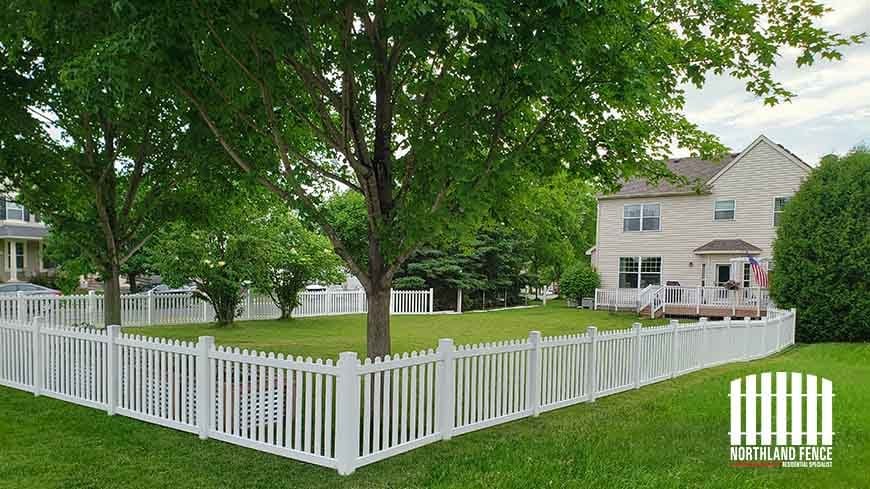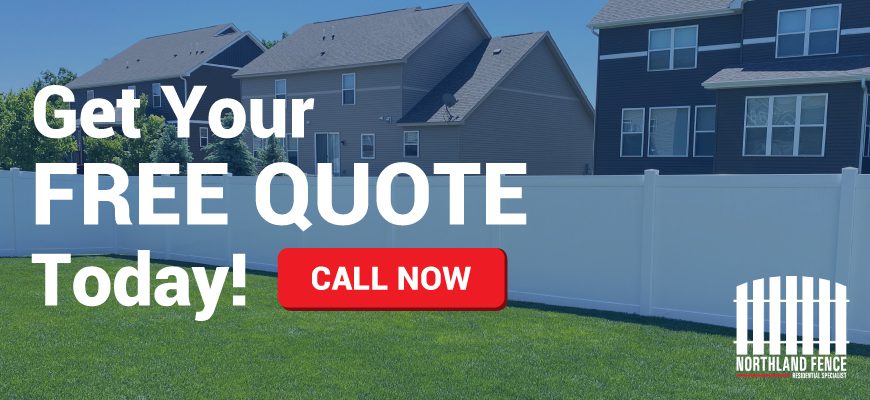Buying a fence might not seem like a big deal, but it really is! When you buy a new fence, you’re making an investment in your yard and property. Fences can really add that je ne sais quoi to your yard, even though it might never look like the ones on HGTV. They help keep your dog and kids in the yard, and you have more excuses to avoid making small talk with your neighbor.
In our eyes, fences are an easy win-win.
But then there’s that pesky question: What kind of fence is right for you? Fences come in all sizes and shapes and materials. Two of the most common fences that homeowners consider buying are vinyl and wood fences, two very classic materials.
Although both may seem like appealing choices, we believe that quality fencing should last for years, making vinyl fences the clear winner.
Here’s an easy breakdown of each option, but keep reading for more detailed explanations!
Vinyl
Pros
- Extremely durable
- Low maintenance
- No painting or staining needed
- Will not chip, fade, or warp
- Not susceptible to termites or insects
- Lifetime Warranty
- Versatile colors and styles
- Fireproof
- Best lifetime value
Cons
- Costs are slightly higher than a standard cedar fence
Wood
Pros
- Less Initial Cost
- Can be painted or stained many colors ($$)
Cons
- Requires regular maintenance ($$)
- Vulnerable to rotting, peeling, and sagging
- Prone to moisture damage (mold)
- Susceptible to termite and pest damage
- Cedar will fade to grey if untreated
- Warping occurs in posts, rails, and boards
- Average 10-year lifespan
Point #1: Quality Fencing Should Last for Years!
At Northland Fence, we believe all our fences should be built with the best products available. Although cedar boards have been a traditional material used in fencing for decades, we now know it’s not the best option for our environment (i.e. Minnesota winters) or long-term customer satisfaction.
Let’s be real here. You know what we’re talking about with Minnesota winters. Everybody knows. Those cedar board fences are not going to hold up in our intense winters for very long, and settling for less when it comes to an important addition like a fence is hardly the way to go when we’re talking about how long your investment should last. When you spend your hard-earned money to invest in a fence for yourself and your family, you want to buy a product that will last and is tough.
While it’s true that cedar is a very traditional fencing material and gives a certain look to homes and yards, the material doesn’t hold up very well in the long run. Upon initial installation, cedar fencing can look really nice! However, the wood fences begin to break down very quickly.
Out in the yard exposed to the elements, cedar fences are susceptible to discoloration, decay, rot, and termite and pest damage. In Minnesota, where our weather fluctuates from cold winters to hot summer days, snow and rain warps the wood and footings, ruining the appeal and stability of the fence.
Over time, the fence will simply begin falling apart and need replacing, bringing you another issue to worry about.
With our years of experience, we have seen first-hand the issues with cedar fences, and we believe that vinyl is without a doubt the better choice for fencing.
Point #2: Vinyl Fences Are Low Maintenance vs. High Maintenance Cedar Fence
You’ve got a beautiful new cedar fence installed in your yard. Your dog has finally stopped running off into the neighbors’ yards, and now you can just relax. A couple of months down the line, you notice some termite damage in the wood. Now you’ve got to spend more money to maintain your new fence just when you thought you were in the clear for a while.
Although cedar fences might be able to give a standard, traditional look that is appealing to many people, vinyl fences are virtually maintenance free.
When you want to clean a vinyl fence, simply take the garden hose to it or grab a bucket of soapy water and a rag or sponge. Even if you decide that you don’t mind seeing some bird droppings sprinkled on the fence here and there, leaving dirt on a vinyl fence won’t affect its lifespan!
The ability to leave your fence dirty is something you can’t do with cedar fences. Cedar fences have a high upkeep. You need to inspect them every so often to make sure there’s no damage, and spend more money and time trying to correct problems. You also need to seal, stain, or paint your fence in order to properly protect the wood. Wood rots and warps, requiring replacement boards. These costs can add up quickly.
When you aren’t able to fix a problem, a cedar fence’s lifespan will be shorter. You can’t just take a soapy rag to a wood fence and hope to fix everything. Then, of course, when the fence inevitably rots away, you have to get a new one.
Overall, the cost and time savings make vinyl fencing our preferred choice.
Point #3: Vinyl Fence Cost vs. Wood Fence Cost
Seeing how the first two points turned out, can you guess which fence will win the ultimate cost competition? If you said vinyl, you’re correct!
Although the upfront cost of cedar fences is cheaper than vinyl fences, vinyl fences win the affordability game in the long run.
The lower initial cost sounds nice at first, but it doesn’t take into consideration the amount of money and time you’re going to spend on upkeep for a cedar fence. A cedar fence needs to be painted, stained, or sealed to help ensure longevity (which still doesn’t last as long as a vinyl fence). The services and materials needed to properly treat and take care of a cedar fence can raise prices very quickly.
All that is just the beginning. Since your cedar fence will eventually rot, you’re going to need to buy replacement boards and pay for installation or install them yourself, costing you more time and effort. Then, when your cedar fence has warped or been damaged to the point of unusability, you’ll have to pay for that whole process again when you buy a new one.
With a vinyl fence, you pay a bit more up front, but you won’t have to pay for upkeep or a replacement fence like you would with cedar. A vinyl fence not only gives you peace of mind with its longevity—it also makes your wallet happy, too!
Point #4: Vinyl’s Lifetime Value Is a Better Return On Investment than Cedar’s Limited Warranty
In Minnesota weather, anything that is going to stand the test of time needs to be strong and durable. Cedar fencing can last about 20 years, but during those years it will require multiple treatments, stains, and frequent care. Maintenance on a cedar fence can be costly, and in the end, all of the wood will deteriorate and need to be replaced.
A vinyl fence will last decades without needing any maintenance or vinyl fence upkeep from you. As vinyl is more durable, it also handles hot, humid summer days the same as biting winter winds, with flexibility and unchanging appearance. Northland Fence offers a lifetime, non-prorated warranty on materials as well as a 5-year warranty on labor with all of our vinyl fence installations. Hands down, the durability of vinyl allows for the best lifetime value that far outweighs the slightly higher initial costs.
Point #5: Vinyl Fencing vs. Cedar Fence Color and Fade Protection
Cedar fences can be stained or painted many colors, but over time, you’ll have to work to maintain that color. A wood fence that’s freshly painted looks great, but after being out in the elements, that color will definitely chip and peel. After standing through Minnesota weather, the color will also fade, and it won’t be as vibrant as it once looked right after installation.
Vinyl fencing, on the other hand, provides you with a great color and finish that is durable and lasts! Nowadays, vinyl fencing comes in a variety of colors, letting you choose what works best for your yard without sacrificing the option to choose a color.
Vinyl fencing can also be treated to help protect from UV ray damage. Just like you put on sunscreen (or are supposed to at least) before heading outside, your vinyl fence can come well equipped with proper sun protection, adding to its durability in the elements!
With non-fading material and a variety of color options, a vinyl fence looks brand new for many years! We’re confident that a vinyl fence is a great choice for anybody looking for an investment that lasts and is worth the money.
At Northland Fence, we’re determined to give all our customers the best fences for their needs with the highest-quality materials. We highly recommend vinyl fences to all our clients for their durability, low maintenance, and cost-effectiveness. Use our free online fence builder or contact us today for all your fence needs by calling (763) 316-4881.
Frequently Asked Questions
How much is the cost of a wood fence vs. a vinyl fence?
The upfront cost of a wood fence is less than that of a vinyl fence. However, in the long run, vinyl fences are more cost-effective. Wood fences require regular maintenance and upkeep, including painting, staining, sealing, and replacement panels for rotting wood.
Does vinyl fencing last longer than wood?
Yes! Vinyl fencing lasts a lot longer than wood fencing since wood fences are highly susceptible to the environment and will eventually rot and deteriorate, despite even the most valiant attempts at saving them.
How long do vinyl fences last?
Vinyl fences are durable and can withstand a lot of environmental factors. They can last upwards of 30 years. In contrast, a cedar fence averages about 15 years. That means a vinyl fence can last twice as long as a cedar fence!


